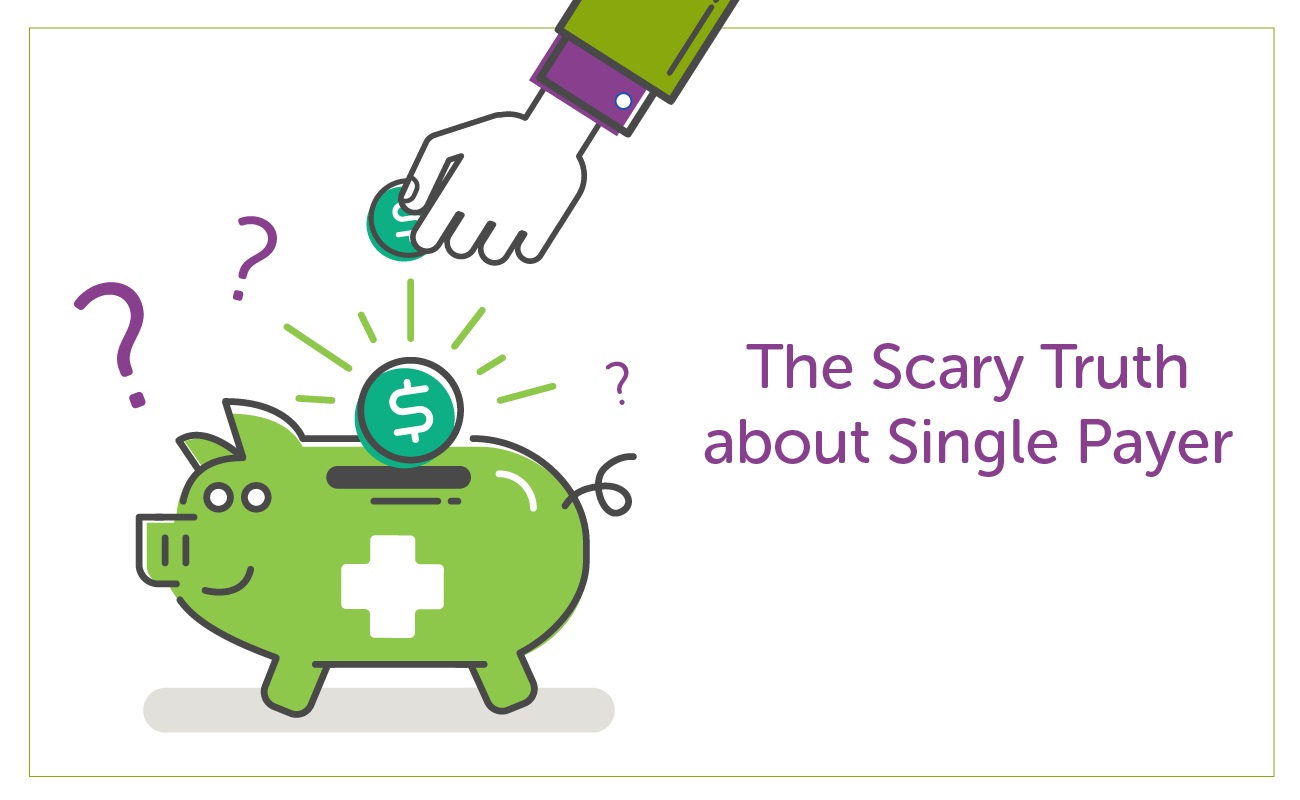Single Payer – Beyond the Headlines

First impressions matter.
From handshakes to headlines, what we see, how we feel, and the way we think about something or someone is often determined in a matter of seconds. So you can imagine my concern (outrage, really) when I recently woke up to read the headline, “Single Payer Financially Feasible in NY.”
If you took the time to actually read the article, which was based on a recent RAND study, you would almost certainly conclude that single-payer – a system in which the government runs your health care – would not only obliterate the state’s economy, but would have grave effects on the quality of care you receive in New York.
But alas, not everyone reads past the headline…
A recent study by Columbia University found that 59 percent of links shared on social media are never clicked on, and presumably, never read. This, despite the articles being shared millions of times.
An article in the New Yorker entitled “How Headlines Change the Way We Think” examined the craft of headline writing. The article pointed out how headlines can draw attention to certain facts or details, thus influencing your mindset as you read the piece.
Curious as to what the RAND study may have found, I committed to reading the piece and drew the following conclusions about what single-payer would actually look like here in New York.
Taxes, taxes, and more taxes
The study projects the state would need to raise about $210 billion in additional taxes in order to pull off a single payer system. That’s about $70 billion more than the current state budget. As a lifelong New Yorker, I have pretty thick skin when it comes to taxes, but it’s fair to say this sort of increase would demolish our economy.
In addition to raising taxes for some of the wealthiest New Yorkers, the study says single-payer would also raise taxes for low-income earners, many of whom already receive free health care services through Medicaid. This means households currently making less than $27,500 a year would see their taxes increase by about 12 percent without the added benefit of health care cost savings.
A single payer system would also hit Wall Street with an additional tax on interest, dividends, and capital gains. Few people have run to the defense of the trading capital of the world, but it’s worth noting that Wall Street – possibly the state’s most mobile industry – contributes about $14 billion a year to the state budget and accounts for nearly 20 percent of all tax collections in New York. Imposing yet another tax on the industry would unquestionably send many investors packing to a much more tax-friendly state.
What’s up, doc?
The study goes on to say that the state could lower health care costs by cutting the salaries of America’s most trusted professionals, i.e. your doctor. According to estimates, such a plan would reduce compensation for doctors, hospitals, and other clinicians by as much as 40 percent.
The argument is fatally flawed when you consider the fact the government has been trying for years to cut health care costs through programs like Medicare, Medicaid, and the VA, all with minimal success. Medicaid has been marginally successful, but many doctors refuse to accept Medicaid patients because reimbursement rates are so low. Furthermore, hospital executives constantly argue the need to increase costs for commercial insurance to make up for losses endured as a result of Medicare and Medicaid.
It’s no secret that most physicians make a comfortable living. And rightfully so, the average medical student graduates with $175,000 in debt. But you have to wonder how many people would choose a career in medicine knowing they would ultimately become employees of the state, unable to afford tuition, let alone make a decent living.
As a health plan CEO, you may have guessed that I am opposed to single payer. But not just because of the obvious reasons, which includes the livelihood of my 1,100-person team I consider my family.
Before joining CDPHP, I served as founding member and CEO of Prime Care Physicians, where I co-led a team of 25 cardiologists and helped grow the practice from three employees to a 100-physician, multi-specialty group.
I joined CDPHP in 2008 because I saw an opportunity to make a difference in peoples’ lives by improving the quality of care we provide to the community. Since then, CDPHP has been recognized as one of the top-rated plans in the nation; we have been named one the Best Companies to Work for in New York for 10 consecutive years; and we were recently named “Highest in Member Satisfaction among Commercial Health Plans in NY” by J.D. Power for the second consecutive year. This isn’t a commercial, these are facts.
Every New Yorker deserves high-quality, affordable health care. In fact, the state has been very successful in providing insurance coverage to more than 95 percent of residents and currently has the lowest uninsured rate in history. While much more work needs to be done to cut costs and get more people covered, allowing the government to take over something as important as your health care is simply not the answer.
I don’t blame reporters for the misleading headline suggesting single payer is “feasible” in New York. After all, I know the editors, not reporters, are the ones under the gun to grab readers’ attention. But before you draw any assumptions about an issue as an important as your health, I hope you’ll take the time to read the entire story and understand the implications of such a downright scary proposition.
 The Daily Dose
The Daily Dose
Comments are closed.